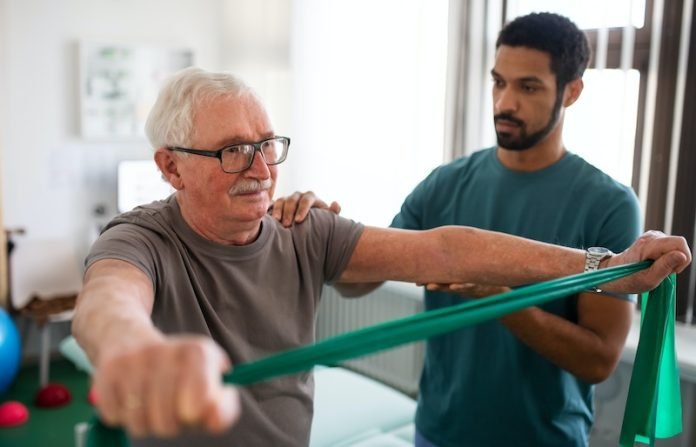
Two decades ago, Gregory Hicks, now a Distinguished Professor of Health Sciences at the University of Delaware, embarked on a research journey that was not widely pursued in the United States: studying chronic low back pain in people over 60 years old.
Today, while research on back pain has increased, studies focusing on older adults remain limited.
Hicks, a dedicated researcher aiming to enhance the health of older adults, emphasizes the importance of not neglecting this age group in musculoskeletal research.
He challenges the societal notion that older people deserve less care for such issues, advocating for equality in treatment irrespective of age.
His passion for working with older adults is driven by the recognition of health disparities due to age, similar to those related to race and ethnicity.
Backed by the National Institute on Aging, part of the National Institutes of Health, Hicks recently spearheaded a clinical trial collaborating with teams from Duke University and the University of Pittsburgh.
This study, known as the Manual Therapy and Strengthening the Hip (MASH) Trial, is pioneering in its approach.
It’s believed to be the first clinical trial examining the effectiveness of tailored physical therapy for an at-risk subgroup of older adults with chronic low back pain, who also suffer from hip pain and muscle weakness.
The MASH clinical trial, conducted from November 2019 to April 2022, involved 184 participants.
They were randomly assigned to receive either hip-focused or spine-focused therapies over eight weeks at various research locations, including the Physical Therapy Clinic on UD’s Science, Technology and Advanced Research (STAR) Campus.
Participants were assessed for pain-related disability, walking performance, and their ability to rise from a chair.
Published in The Lancet Rheumatology, the trial’s findings are enlightening.
Both therapies improved walking speed, but the hip-focused therapy led to a more significant reduction in disability from low back pain immediately after the intervention, although this difference was not observed at six months.
Additionally, a higher percentage of participants in the hip-focused group showed substantial improvements in disability scores and chair-rise performance, as well as walking endurance.
Hicks’s work builds on his earlier research, which followed older adults with chronic low back pain for a year, focusing on hip impairments. The MASH trial underscores his belief that not all low back pain is the same.
By identifying sub-groups of patients with similar characteristics, tailored treatments can be developed, potentially leading to better outcomes.
His approach is akin to precision medicine and precision rehabilitation, using artificial intelligence and modeling tools to classify distinct chronic low back pain sub-groups.
As Hicks plans further clinical trials to refine hip-focused physical therapy and develop treatments for other sub-groups, his commitment to older adults remains steadfast.
He challenges the exclusion of older adults from low back pain research, advocating for inclusivity and recognition of their needs.
His work is a testament to his dedication to this often-overlooked age group and his contribution to understanding and treating chronic low back pain in the elderly.
With low back pain being the leading cause of disability globally, Hicks’s research not only addresses a pressing health issue but also sheds light on a demographic that is too often left in the shadows of medical research.
If you care about pain, please read studies about how to manage your back pain, and Krill oil could improve muscle health in older people.
For more information about pain, please see recent studies about how to live pain-free with arthritis, and results showing common native American plant may help reduce diarrhea and pain.
The research findings can be found in The Lancet Rheumatology.
Copyright © 2023 Knowridge Science Report. All rights reserved.



